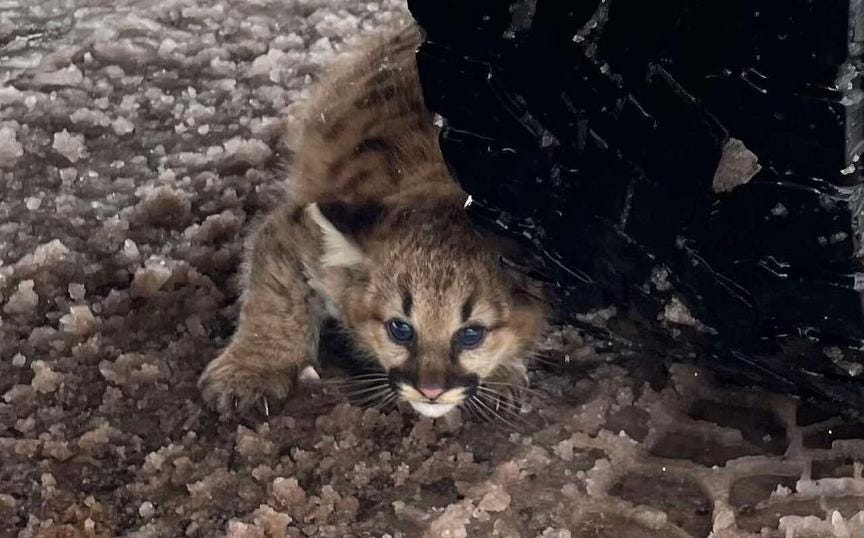By Dan Fletcher
Here is today’s audio edition!
I’m back in the U.S. after a nine-hour flight from Stockholm yesterday. I woke up jet lagged and as I did my bleary-eyed scroll through the morning's conservation news with my mug in hand, I found an unexpected connection between my caffeine fix and a troubling new report about America's birds.
Let’s start with the bad news: More than one-third of America's bird species are now in trouble, according to the newly released 2025 State of the Birds report. Among the 229 species requiring urgent conservation action, 112 have already lost more than half their populations in the last 50 years. It's a crisis that spans every habitat, from coastal wetlands to mountain forests.
But amid the concerning statistics, scientists and conservationists point to an unexpected way anyone can help — your morning cup of coffee.
Here's why: Millions of North American songbirds make an extraordinary journey each year, traveling thousands of miles to spend their winters in the coffee-growing regions of Latin America and the Caribbean. Baltimore orioles that posted up in Maryland backyards all summer head to Mexican coffee farms for the winter. Even tiny wood thrushes, weighing less than two ounces, navigate thousands of miles from Eastern U.S. woodlands to Central American coffee plantations.
What they find when they arrive can mean life or death. Traditional coffee farms, with their diverse canopy of native shade trees provide crucial winter habitat. But over the past 50 years, more than three-quarters of the world's coffee production has shifted to sun-grown plantations — vast monocultures that offer little sanctuary for wildlife.
Enter “Bird Friendly” coffee, a certification program developed by the Smithsonian Migratory Bird Center in the 1990s. To earn the label, coffee farms have to maintain some strict standards: at least 40% shade coverage from a minimum of 11 different tree species, creating a complex forest ecosystem where birds can thrive. The certification also requires organic practices, ensuring no pesticides threaten the birds or other wildlife.
The impact can be dramatic. Research shows bird-friendly coffee farms support more bird species than any other agricultural land — and sometimes even more than natural forest. These farms become vital refueling stations for exhausted migrants and year-round havens for resident birds.

Yet despite its outsized impact on conservation, bird-friendly coffee remains a tiny fraction of the global market. Less than 1% of the world's coffee farms meet the certification's rigorous standards. This creates a chicken-and-egg problem: without more consumer demand, farmers have little incentive to maintain or adopt bird-friendly practices, but many coffee drinkers don't even know the certification exists.
The good news? The certification is still gradually growing. Today, more than 76,600 acres across 12 countries produce bird-friendly coffee, an area about the size of Salt Lake City. And with Americans drinking about 400 million cups of coffee daily, even a small shift in consumer preference could have an outsized impact on bird conservation.
So while the State of the Birds report paints a concerning picture, it also shows us that some solutions are surprisingly accessible. As Dr. Steve Adair, chief scientist at Ducks Unlimited says in the report, "Many bird populations are struggling. But a proven blueprint for success is science-based planning and collaborative investment in habitat conservation."
And sometimes that investment can be as simple as choosing a different bag of beans. Here's how to find bird-friendly coffee near you.
Quick links!🔗
For the first time in over a century, wildlife officials have confirmed cougar cubs in Michigan, spotting two youngsters on private land in Ontonagon County. Since 2008, Michigan has logged 132 cougar sightings, but these were all believed to be adult males wandering in from Western states. DNA testing has yet to confirm any breeding females in the region, making these cubs' appearance both exciting and mysterious.
After losing 80% of their population in just three decades, Indonesia's Javan slow lorises are getting a second chance. A rehabilitation center has successfully released over 670 rescued lorises back to the wild, many saved from the illegal pet trade where their teeth are often brutally removed to make them "safer" pets. While their doe-eyed faces made them social media sensations (driving more illegal capture), these remarkable nocturnal primates are one of only a handful of venomous mammals. Their unique defense mechanism? A bite that can actually rot flesh. Conservation efforts seem to be working — the center reports seeing fewer rescued lorises with clipped teeth, suggesting stricter enforcement may be slowing the illegal trade.
And finally, the Nashville Zoo welcomed a new baby clouded leopard cub who is still in need of a name. Caught between two worlds, clouded leopards blend big and small cat traits in a unique evolutionary package that split off about 6 million years ago. While their massive canine teeth and circular pupils resemble their larger cousins like tigers, they share many behaviors with smaller cats — they can purr but not fully roar, are excellent at climbing trees headfirst like house cats on steroids, and have similar hunting styles to smaller wild cats.









Fascinating to read about the link between birds and coffee. I will definitely go looking for some bird friendly coffee to try.
Very interesting and so wonderful to learn more about our wild neighbors.